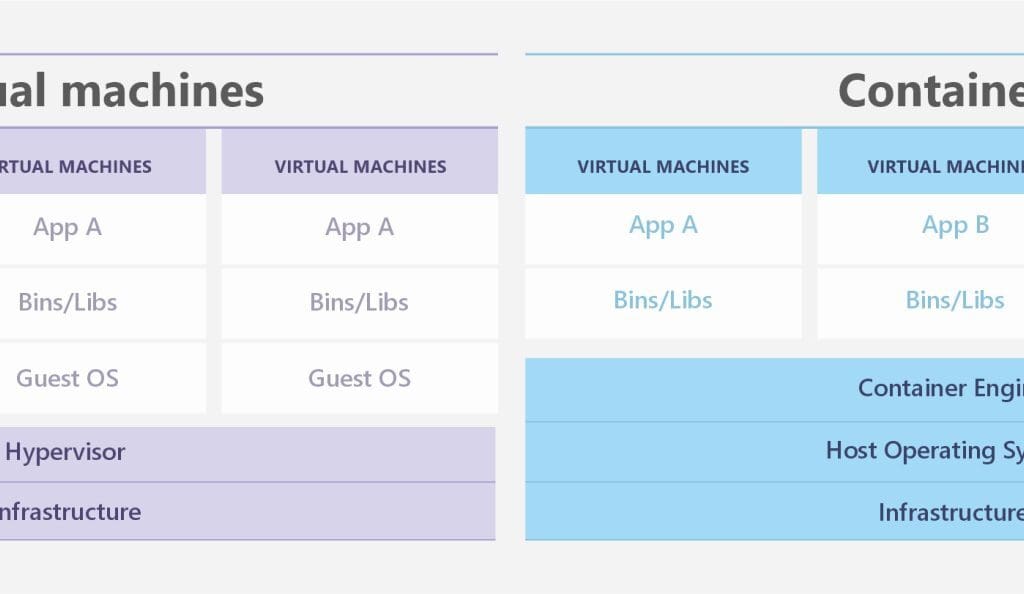
01
Environmental, Social, Governance (ESG) goals are a measure of every organisation’s sustainability and resilience.
02
Coliance’s Alex Konusa recently took some time to answer questions about software containers and why they are gaining popularity within the IT sector, specifically in Supply Chain.
03
IBM recently commissioned a White paper by IDC that highlights the challenges organisations face in their B2B document management and exchange processes.
04
The Risk of Outdated Legacy Systems – How Woodmansterne reaped the benefits of technology change.
05
We can now confirm that this will be an in-person event at our IBM York Rd office in London on Friday 14th October from 9am – 4pm.
01
Sustainability the Power Game
Environmental, Social, Governance (ESG) goals are a measure of every organisation’s sustainability and resilience. The criteria are increasingly used to inform your business’ strategic goals, operational execution, as well as the reporting of sustainable business practices to key stakeholders/customers and potential future investors. This includes the tech sector, who are making significant progress in helping other sectors become more energy efficient. GCP recently commissioned IDG to conduct a study of 2,000 senior IT leaders which resulted in 90% of the respondents agreeing that sustainability is a priority for their IT departments.
Few people understand that computing’s carbon emissions account for 1.4% of the global greenhouse gas (GHG) footprint, or that this will rise to 14% by 2040. Data centres make up the largest share of this percentage and are noticeably bad for the environment. Organisations can considerably reduce their carbon footprint if they opt for cloud computing as opposed to buying and physically maintaining a physical infrastructure. Cloud providers host thousands of businesses with different usage patterns. They can therefore predict the usage more accurately by using fewer servers and less energy to achieve the same amount of work.
If you are currently wondering how you can upgrade your integration processes to technologies that focus on sustainability, then you may want to consider a different platform for your systems. The benefits far outweigh those you will attain by simply moving to new hardware in order to bring your system up to date. It may be time for a complete technology shift. To help you learn more, this article introduces some of the main vendors in the cloud space and how containerisation technologies can help you move your solutions to the cloud without locking yourself into one vendor.
This SaaS solution connects to multiple data sources in real-time to calculate carbon emissions and provides intelligent insights for carbon reduction. Emissions data can be viewed in a comprehensive report and categorized by the source for targeted emission reduction strategies. Organisations who adopt this infrastructure can track and report emissions across the value chain and use these insights to design impact reduction strategies.
Carbon footprint is the Google tool that allows GCP customers to measure, track and report any gross carbon emissions associated with their cloud usage. They alert customers about their carbon footprint associated with idle cloud instances, giving them the option to delete these instances and lower their carbon footprint.
AWS is the most recent player to develop a carbon tracking tool, with the AWS Customer Carbon Footprint Tool being announced in December 2021. Like Azure and GCP, AWS’ tool provides its customers with carbon footprint data from using AWS cloud services. The Customer Carbon Footprint Tool can also measure how AWS’ in-house green initiatives lower AWS workloads’ carbon footprints.
The results of a study by 451 Research show that AWS’s infrastructure is 3.6 times more energy efficient than the median of U.S. enterprise data centres surveyed and thus we can extrapolate these results for the UK and European marketplace. Over two-thirds of this advantage is attributable to the combination of a more energy-efficient server population and much higher server utilization.

If you have already seen the benefits of moving to cloud computing, to be “greener”, you can take this up a notch by reducing your computing power even further. There is an adage “obliterate don’t automate…” i.e., don’t just buy a bigger server, look at what you are running on it. Eradicate some of the complexity you do not need. Rather than running whole operating systems to facilitate a single product, utilize all the minimum components needed and use these instead, in a nutshell, containerise your solutions.
Containers have become increasingly important in cloud environments. They are used to abstract applications from the physical environment in which they are running. They package all the dependencies related to the software components and run them in an isolated environment.
Containers are easier to migrate to the cloud and can leverage their extensive automation capabilities.
Whilst containerisation allows you to run products with a smaller percentage overhead, the benefits will only be realised when that infrastructure is already in existence, either in the cloud or in a well-used on-premises solution. Microsoft Azure Sustainability.
With containers, you can break your applications into more component parts. You can spin up the parts you need and leave the ones that you don’t. If you require more capacity, you can spin up more processing power or remove it entirely. Containers are designed to spin up in milliseconds and can match capacity requirements very closely, making each unit more granular, and giving you more control. One may argue that modern virtual servers do this already, but in practice, it is a heavily managed process. There are massive inefficiencies in servers designed for a ‘one type fits all’ vs a lightweight container designed for a specific task.
It is important not to get vendor locked with your chosen cloud technology. This can be achieved by ensuring that the containerisation technology you choose isn’t from one of the main cloud providers, i.e., not AWS, GCS, or Azure. Each of these vendor technologies builds in a level of vendor locking that could be costly in the long term if your chosen cloud provider cannot meet your current needs or raises their prices against viable competitors. The best way to avoid this is to consider a cloud agnostic solution. One of the best at present is IBM Red Hats Kubernetes Suite. They provide enterprise support and resilience on a platform that works across multiple cloud providers and on-premises.
In the past, ESG discussions have typically focussed on pollution control, biodiversity, health and safety and business ethics, but technology related risks and opportunities are now receiving more attention. The environmental footprint of data centres is becoming a huge area of concern around the world and optimising applications to ensure they include green practices is imperative. Migrating from on-premises data centres to an energy-efficient cloud can certainly help your organisation reach their emission reduction target. The benefit from an ESG standpoint is clear, but you need to be aware of the challenges and pitfalls.
Organisations who have adopted containers are experiencing drastic improvements not only in their DevOps workflows, but in productivity, not to mention effectively achieving their ESG Goals.
In most organisations, however, IT staff do not have container experience, and this is where Coliance is available to guide you through the complexities. We will assist you in making the adoption of a container ecosystem easier with swift onboarding and ease of use. The decision to containerize your software estate will help you meet your sustainability goals and those of your most important customers. The trick for you as an IT leader and visionary is to prepare your estate well and avoid vendor lock in, which could be costly to undo in the future.

02
What are software containers, and why should we use them?
Coliance’s Alex Konusa recently took some time to answer questions about software containers and why they are gaining popularity within the IT sector, specifically in Supply Chain. Traditionally, Supply Chains have operated in non-containerized environments where operations, middleware and development teams have each had the responsibility for different parts of what gets deployed into production. Many of us wonder, if we are finally at a point where we can look at a converged software supply chain without the pain of standardizing one tool. We are curious how containers can help us achieve this. Alex believes that we have arrived at this point. He reminds us that Containers have been around for a while in the development world, despite being treated as “the new kid on the block” in Supply Chains.
We asked Alex to help us understand everything our clients need to know about introducing containers into their Supply Chain Management and how this is beneficial to them.
Containers were developed as a solution to simplify many tasks and needs. The idea behind them is to bring together tasks that a developer might need, in a lightweight “contained” bundle” that is fully functioning. They can facilitate a lot of tasks, such as:
One obvious advantage is that the differences in Operating Systems and their related heavyweight infrastructure are no longer a problem. These containers speed up development and this means that the developments can be easily tested and deployed to production. An additional and large benefit, is the ability to load, balance, and scale the environments within seconds.
There are many container deployment methods available. There are options available in Cloud, such as AWS, Google, Microsoft, as well as local environments like docker to help with development. Which one you use depends on suitability for your software and company needs. Using them is one thing but making sure they are all working and in the right place is the job of “Orchestration” software like IBM Cloud Kubernetes Service and OpenShift, but this is beyond the scope of this discussion today.
High-level Containers and virtual machines (VMs) can be very easily confused with each other, but they are really very different. Think of it like this: The key differentiator between containers and virtual machines is that virtual machines virtualise an entire machine down to the hardware layers. Containers only virtualise software layers above the operating system level. So, containers are much smaller in size than virtual machines. In many cases this can save a lot of capacity, power, and money which in a world where we are trying to prove our sustainability credentials is a very important consideration.

Virtual machines have a much longer lifespan and are best used for tasks that require long periods of runtime. Containers, on the other hand, have lower longevity with their short start up time, testing, and deployment, and are better suited to smaller, discreet tasks, like those mentioned above. The ability to have many of them, means they are potentially great for load balancing during busy periods.
Here at Coliance, I have been recently tasked to use containers to install IBM B2Bi, to develop, test and troubleshoot. I used Docker as a learning tool. In theory, containerisation allows us to create instances of B2Bi within a few seconds, eliminating the need to set up new instances of B2Bi on our development Virtual Machines which can be time consuming. The advantages thus far include being able to simply delete the container and create a new one from an already existing image if a critical error occurs.
The downside has been that I had to put a lot more thought into networking issues. It was interesting to see all the errors that the team were getting in this area. We found exposing ports to the console ’interesting’ and at times struggled to get items like the Map test tool and Process Modeller to work because of these complexities. But at Coliance we excel at troubleshooting and finding solutions. We all enjoyed the experience and found that many of these problems go away when you move to OpenShift but that is a more detailed discussion for another day.
If you are reading up about software containers and are excited about exploring the technology in more detail, then subscribe to our newsletter and join us as we discover and understand the value that containers can provide to your developers, architects, and operations team and boost your supply chain management process.

03
The Business Value of IBM Sterling B2B Integration and Managed File Transfer Solutions
IBM recently commissioned a White paper by IDC that highlights the challenges organisations face in their B2B document management and exchange processes. Inefficient, error-prone manual processing and transmission of documents and data generally pose a significant challenge to many clients, given the complex digital business environments in which they operate.
In the study IDC outlines how you can modernise your File Transfer and EDI solutions by making them cloud ready and/or containerising the solutions to drive cost and sustainability initiatives. In addition, they examine how modern integration methods such as the use of API’s can be applied to traditional solutions and, most importantly, how you can ensure a secure, robust solution for your managed file transfers and EDI transactions to meet regulatory and compliance requirements.
Some of the key statistics to come out of the report were as follows:
Together with IBM, Coliance has 20 years’ experience of implementing file transfer and EDI solutions to the distribution, logistic and food supply industries. Working with major organisations such as Brother, Bunzl, DP World and Woodmansterne, we have a proven history of providing high performing and secure solutions that offer:
To book an appointment or find out more about our services, Get in Touch or call 01329 888953.
Reference
04
The Risk of Outdated Legacy Systems – How Woodmansterne reaped the benefits of technology change.
Technology is evolving rapidly, but many businesses still hold on to legacy systems, fearing that implementing a new infrastructure could be too costly and have the potential for major business interruptions. What they should ask however, is:
At Coliance, we have found that most companies spend more time and money maintaining their legacy system, as opposed to the effort and cost of upgrading. They face increasing difficulty as their system ages:
Woodmansterne cards, the UK’s leading publisher and manufacturer of greeting cards, were familiar with all the issues experienced with outdated legacy software. Recently featured on the BBC’s – “Inside the factory”, Woodmansterne is a third generation card company and the foremost supplier of greeting cards to independent retailers in Britain. Supplying around 30 million cards a year, they are one of the UK’s leading greeting cards manufacturers. The Greeting card market in the United Kingdom is worth GBP1.7billion with the purchase of 900 million cards at Christmas time alone. Until 2020, (and before they met Coliance) Woodmansterne was reliant on technology that was difficult to maintain and inflexible to their requirements, specifically to onboard new partners and services.
Find out how Coliance helped Woodmansterne modernize and remove obstacles, bringing them to a complete digital transformation, future proofing their organisation and maximizing their efficiencies. Read the full article here.

Coliance © 2024 All rights reserved